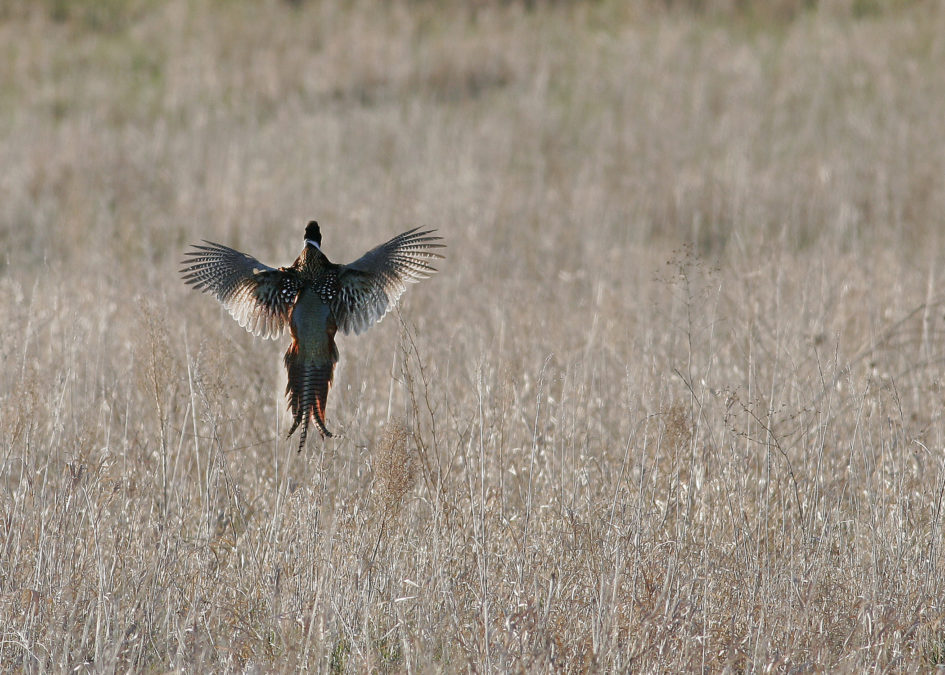When North Dakota’s regular deer gun season closes – this year on Sunday, Nov. 20 – it’s kind of a bittersweet end to the traditional hunting calendar for a lot of folks.
But for some avid upland bird hunters, the end of deer gun season is a new beginning of sorts, as most of the state’s major national wildlife refuges open to upland game hunting once the deer gun season is closed. That happens on Nov. 21 this year.
The refuges are open through the end of the state’s upland seasons on Jan. 8, 2017.
North Dakota has 10 refuges that are part of this upland game hunting program. Another half-dozen or so refuges allow some big game gun or archery hunting and/or fishing. These are all owned and managed by the U.S. Fish and Wildlife Service. Most of them were established in the 1930s and ‘40s as a safe haven for ducks and geese.
For many years these refuges did not allow any hunting or fishing, but eventually they have incorporated some hunting, as well as fishing access, as long as those activities don’t conflict with each refuge’s primary purpose of providing a protected resting area for migrating waterfowl.
North Dakota actually has more than 60 refuges under the National Wildlife Refuge System, but more than 40 of them are tracts of private land under easement to the fish and wildlife service to also serve as waterfowl resting areas. Hunting of any type is not allowed on these easement refuges.
The refuges that open to upland game hunting are as follows.
Arrowwood 701-285-3341; Audubon 701-442-5474; Des Lacs 701-385-4046; J. Clark Salyer 701-768-2548; Lake Alice 701-662-8611; Lake Zahl 701-965-6488; Long Lake 701-387-4397; Lostwood 701-848-2722; Tewaukon (for pheasants only) 701-724-3598; and Upper Souris 701-468-5467.
Parts of each refuge are not open to hunting, so anyone who is not familiar with the open zones should call ahead for information on closed areas. Information is also available online at www.fws.gov and then clicking on “National Wildlife Refuges” for details on each individual refuge.
Refuge hunters are reminded that use of nontoxic shot is required on all fish and wildlife service lands. All other current season state regulations, such as for shooting hours and bag limits, also apply.
Salmon Spawn Completed
In other fall news, fisheries crews have completed their annual salmon spawning operation on the Missouri River System after collecting roughly 2 million eggs.
Dave Fryda, North Dakota Game and Fish Department Missouri River System supervisor, said the salmon spawning season was extremely productive and crews easily collected enough eggs to produce 400,000 smolts or young salmon to stock in Lake Sakakawea in 2017.
In addition to meeting North Dakota’s own egg goals, additional surplus eggs were provided to South Dakota Game, Fish and Parks to help with the Lake Oahe salmon program.
Fryda said the average size of Lake Sakakawea female salmon was 7.6 pounds, about 3 pounds smaller than 2015, but the overall number of salmon in the spawning run was exceptional. He added that abundance of young male salmon, also called jacks, was again high in 2016, which is an indicator of potential good runs over the next couple of years.
Chinook salmon have been a part of Lake Sakakawea since the 1970s. While they cannot naturally reproduce in North Dakota, Game and Fish Department and Garrison Dam National Fish Hatchery personnel collect eggs and transport them to the hatchery.
Once the eggs hatch, young salmon spend several months in the hatchery before biologist stock them in Lake Sakakawea. Leier is a biologist for the Game and Fish Department.



